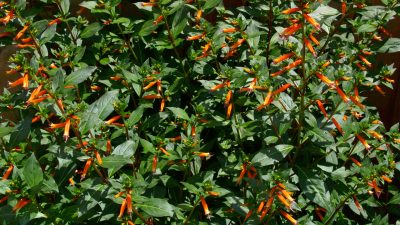What’s eating my Macho Mocha mangave?
Although it looks like this yucca bug is the culprit, it’s not!
Yucca bugs and Largus bugs (also invading this plant) feed by sucking plant juices, so the darkened spots are resulting damage from their feeding.
But the larger holes were caused by snails. Especially they like new growth close to the ground. I’ve noticed similar damage on the leaves of amaryllis, daffodils, calla lilies and other plants. Snails also love fruit that is close to the ground, so you should take extra precautions to protect your strawberries.
Snails can be tricky. They hide out in the cool moist air under the leaves of your plant during the day, and you don’t even think to look for them until the damage is done.
How to deal with them? The old remedy of beer in a tuna can or other small, shallow dish does indeed work very well, since the snails are attracted to the carbohydrates and fall in but can’t get out. Another great way to capture these pests is to put a board in your garden, right on top of the soil of mulch. Snails will hide under the board, making them easier to catch during the day.
But the first step in managing snails and slugs is to find and remove as many as possible. Dig around in the soil or mulch near the base of your plant, and in shady areas of the garden. Early morning, when it’s light out but not sunny yet, or cloudy, cool mornings, are the best times to find snails and slugs, since they’ll be out feeding at this time and will be easier to find.
Don’t apply baits! Read the label very carefully. The active ingredient in most of these products is highly toxic to dogs and cats, and should be avoided if at all possible. Good cultural control really is the best method.

 Bob Atchison
Bob Atchison Rob Moshein
Rob Moshein Lucinda Hutson
Lucinda Hutson Daphne Richards
Daphne Richards
 Eric Pedley
Eric Pedley